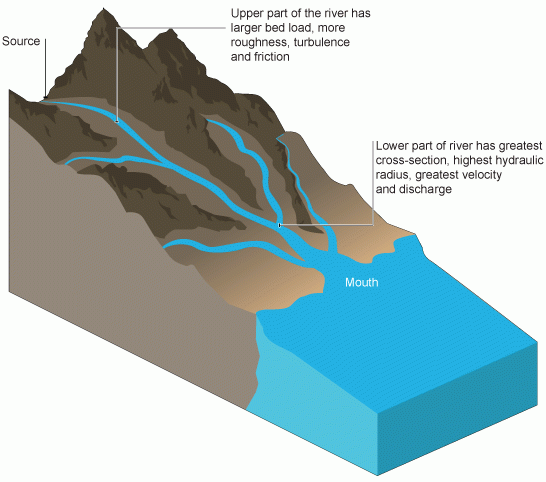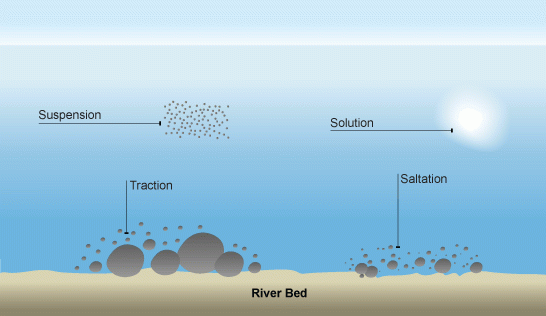River Processes
River Profiles
Rivers begin in upland areas and flow downhill towards the sea. The start of a river is called the Source and the end is called the Mouth.
Along the main river, there are many other smaller rivers which join it called Tributaries. These join with the main river at a point called the Confluence. A river and its tributaries obtain their water from the surrounding land. The area drained by the river and its tributaries is called the Drainage Basis. The boundary of the drainage basin is called the Watershed.
The long profile of a river is a cross-section from the source to the mouth. It consists of three sections:
- Upper section – narrow, steep-sided valleys (v-shaped) where gorges and waterfalls may form
- Middle section – wider valley with floodplain but still with steep valley sides
- Lower section – very wide, flat-floored valley with meanders and ox-bow lakes

Erosion
- Attrition - This is when material bashes against each other and breaks up into smaller more rounded pieces
- Corrosion - This is when material in the river is broken down by chemicals
- Corrasion - This is when stones and pebbles rub away at the bed and banks
- Hydraulic action - This is the power of the water on the bed and banks
Transportation
- Saltation - This is when smaller pebbles are bounced along the river bed
- Solution - This is when lighter material is dissolved and is carried along in the water
- Traction - This is when larger bed load is dragged or rolled along the river bed
- Suspension - This is when light material is carried along within the water (in suspension)

Deposition
A river requires lots of energy to transport its load and when this energy is reduced, the river is forced to deposit the load. An example would be on the inside of a river bend where the slow moving water has little energy and deposits the load.

